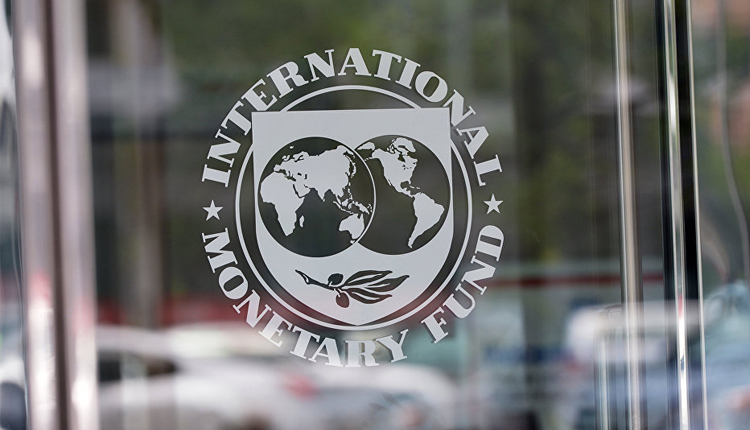Global trade tensions are affecting economy scene, according to a recent report released by the International Monetary Fund (IMF) on Wednesday.
The IMF considered these tension, partly, responsible for the recent downward revisions to its growth forecasts for 2019-20.
“Facing sluggish growth and below-target inflation, many advanced and emerging market economies have appropriately eased monetary policy, yet this has prompted concerns over so-called beggar-thy-neighbor policies and fears of a currency war”, reads the report.
As the report said Monetary policy alone is unlikely to induce the large and persistent devaluations that are needed to deal with the situation. Monetary easing can help stimulate domestic demand, which in turn benefits other countries by increasing demand for their goods.
The concern, however, is that monetary easing also weakens a country’s exchange rate, making exports more competitive and reducing demand for other countries’ imports as they become more expensive, a phenomenon known as expenditure switching.
Adding that, with conventional monetary space limited for some advanced economies, this currency channel of monetary easing has received considerable attention. But one should not put too much stock in the view that easing monetary policy can weaken a country’s currency enough to bring a lasting improvement in its trade balance through expenditure switching.
“As we estimated in our 2019 External Sector Report, the expenditure switching effects of a currency weakening are generally small, especially within a 12-month period. A 10 percent depreciation (vis-à-vis all currencies) improves a country’s trade balance by about 0.3 percent of Gross Domestic Product (GDP) in the near term, on average, with most of the effects coming through a contraction of imports.”
In part, this reflects the fact that trade is largely invoiced in dollars, which means that for most countries export volumes tend to respond little to exchange rates in the short run. This applies to key US trading partners, where the bulk of exports to and from the United States are invoiced in dollars. It is worth noting that in the case of the United States, the muted impact on the trade balance reflects a weak response of imports”, reads the report.
To tackle currency overvaluation concerns, the report clarified that tariffs and exchange rates work differently. A 10 percent tariff does not necessarily offset a 10 percent more appreciated, overvalued, exchange rate as the trade dispute between the United States and China proves that.
In this regard, US importers and consumers are bearing the burden of the tariffs. The reason behind is that the stronger US currency has had a minimal impact thus far on the dollar prices Chinese exporters receive because of dollar invoicing.
“Moreover, higher bilateral tariffs are unlikely to reduce aggregate trade imbalances, as they mainly divert trade to other countries. Instead, they are likely to harm both domestic and global growth by sapping business confidence and investment and disrupting global supply chains, while raising costs for producers and consumers”, according to the report.
The report also asserted that external positions are not grossly misaligned, and policies to weaken currencies by intervening in foreign exchange markets are much less common today than in the past. External imbalances are down sharply from the peaks seen during the global financial crisis, and the dollar was only moderately overvalued in 2018.
This is in sharp contrast to the mid-1980s, when under the Plaza Accord major central banks acted in concert to address a large dollar overvaluation.
Based on that, actions of the right type are needed to sustain the progress made in reducing imbalances over the last decade and also to strengthen global growth. Both deficit and surplus countries should tackle the underlying macroeconomic and structural sources of imbalances rather than adopt ineffective, or even counterproductive, measures such as tariffs.
“Deficit countries, like the United States and the United Kingdom, should reduce budget deficits without sacrificing growth and strengthen the competitiveness of their export industries; options include investing more in skills of workers and encouraging old-age saving. Surplus countries, like Germany and Korea, should use fiscal policy where possible to invest more in infrastructure and adopt reforms that encourage private investment. Such reforms may include supporting innovation through tax incentives for research and development and lowering barriers to entry in business services and regulated professions”, the report proposed.
For China, whose external position was broadly in line with fundamentals in 2018, also has a role to play. In particular, further structural reforms are needed to ensure a lasting external rebalancing, as it gradually addresses vulnerabilities from the high levels of private and public debt.
Steps include reforming state-owned enterprises, enhancing the social safety net, opening up more sectors to private and foreign competition, and removing impediments to trade.
The report was concluded by asserting that both surplus and deficit countries must recognise that they share the responsibility to secure a stronger and more balanced global economy, which means finding durable solutions to trade disputes to address concerns about export subsidies and weak intellectual property protection, while also modernizing the international trade system in areas of services and e-commerce.
“There are serious problems to contend with, such as rising inequality and sluggish growth. Currencies are neither the hammer nor the nail”, reads the report.
Source: Ahram Online


